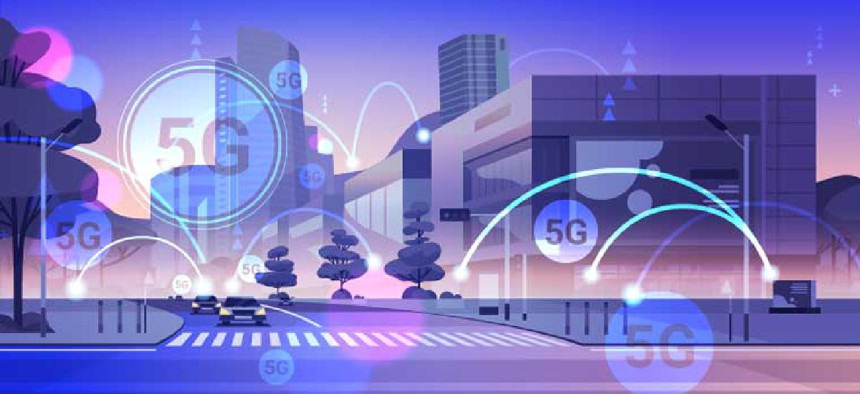Why private networks are speeding up 5G deployments
Private networks offer the fastest way to deploy and control a 5G network environment, increasing broadband speed and coverage and leveraging network splicing.
The COVID-19 pandemic made clear the need for greater connectivity nationwide, and one solution that is hitting its stride as a result is private 5G.
“5G is the fastest growing segment in the wireless network infrastructure market,” according to Gartner, which predicts that by the end of 2024, 60% of cloud service providers will commercialize 5G service in Tier-1 cities. But operators won’t have true 5G on their public networks until 2025-2030, making private networks the fastest way to take advantage of the technology.
To understand how private 5G differs from public, think of it like this: If you have a Verizon cellphone, its SIM card allows you to authenticate and get authorization to use that network, but you can’t use an AT&T network because it is not provisioned to do so. A private 5G network changes that by removing the limitations.
The Air Force’s flight line operations require constant connectivity in an environment that’s always moving, said Mark DeVol, vice president of federal sales at Cradlepoint, which Ericsson acquired last year.
“If we can bring a private cellular network to surround an Air Force flight line or an Army flight line … then you have the mobile connectivity,” he said.
“You can now be working within a private cellular network, not the commercial carrier network, and you can then be the one that owns, manages, operates and -- the biggest thing -- control that network environment. You give up control when you’re working on a commercial network vs. when you can own, operate and maintain it yourself.”
“You basically become a mini carrier yourself,” added Todd Krautkremer, Cradlepoint’s chief marketing officer.
As a result, solutions providers like Cradlepoint are building versions of these private cellular networks to facilitate IT organizations’ adoption of private 5G.
“If there are Wi-Fi devices in the flight line that don’t have SIMs in them, you’re going to use a Cradlepoint device to connect those Wi-Fi-enabled devices to a cellular network,” he said.
The biggest private 5G deployer is the Defense Department. Its 2020 “5G Strategy Implementation Plan” states that DOD “will require the ability to securely use private, hybrid and public 5G networks. In June, the department announced the successful demonstration of a private 5G network in a pilot test of a smart warehouse by Marine Corps Logistics Command in Albany, Ga.
For entities that don’t want to be their own carriers, Krautkremer said a managed service model is an option in which a systems integrator handles the network architecture and management.
Benefits of 5G include speed and the support of network slicing, which allows a single network connection to be partitioned into multiple virtual ones to handle different traffic simultaneously.
“5G is the first true software-defined network, so we’ll be able to do things like network slicing. We’ll be able to slice up 5G and allocate it to applications,” Krautkremer said.
“We will be able to … manage the connection so that if I’ve got a critical connection, it doesn’t get squashed at 5 o’clock because the traffic on the local roadways are all using their cell towers. The bandwidth gets dedicated.”
A longer version of this article first appeared on GCN, a Defense Systems partner site.




